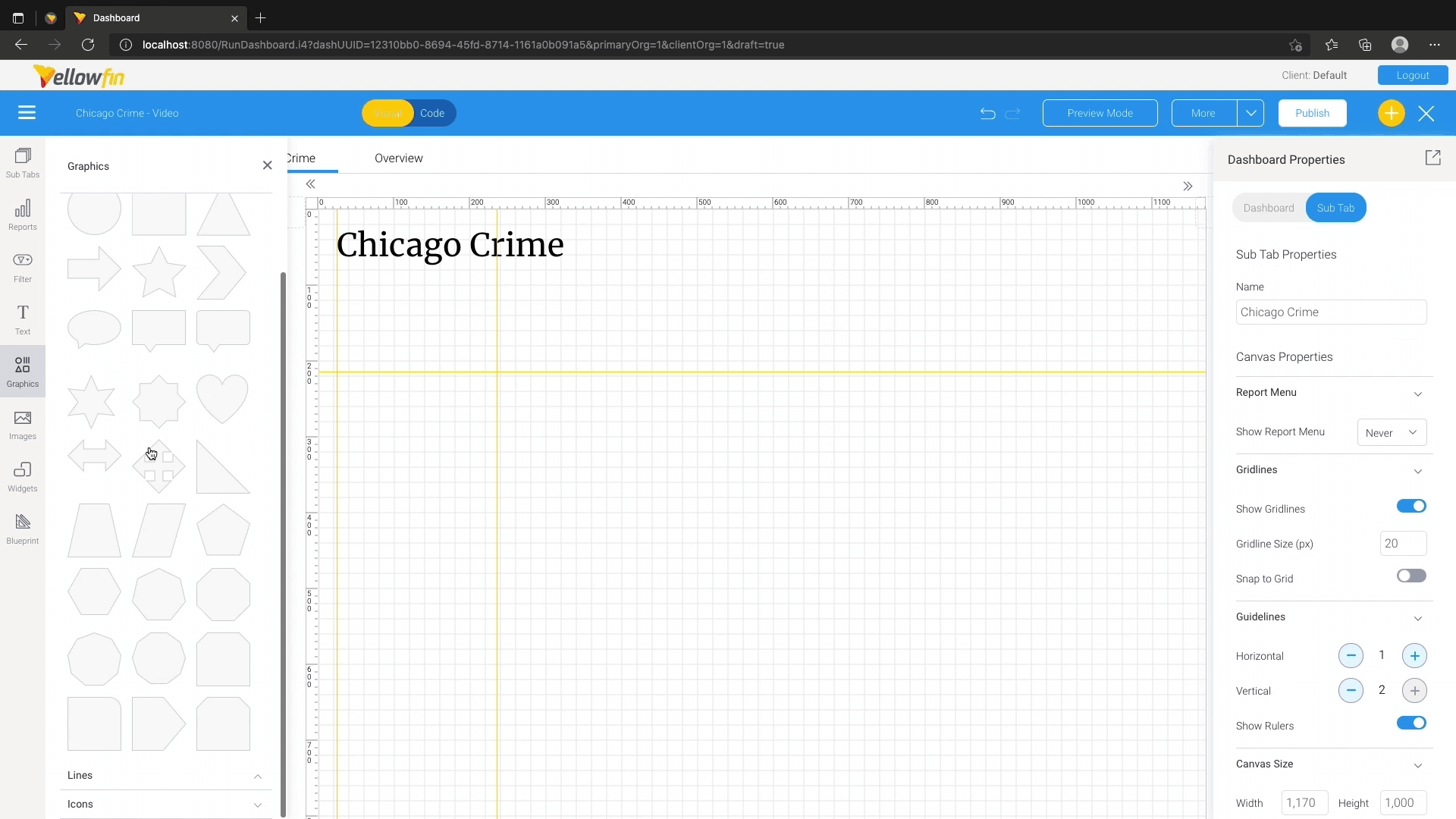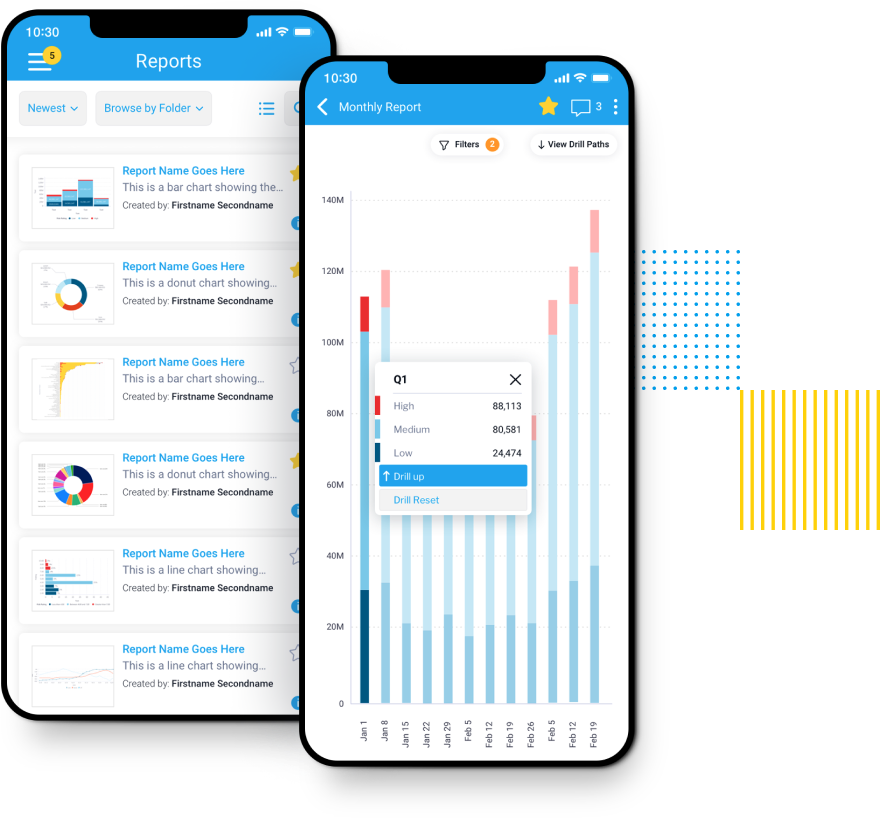
How to build the best analytics experience for your SaaS product
For any product team with a Software as a Service (SaaS) application, the significance of embedding capable, reliable analytics is well understood. But it’s important to remember how valuable these tools are for your users’ experience, too.
Having fast access to data and easy ways to explore it is, as you know, key to monitoring business performance, finding trends, sharing insights, and improving your core product.
Today’s business user also wants more when they use your product. That includes the same fast, easy analytics you have, to get data that helps find, track and resolve issues.
In the past, users have typically had to export data from the apps they use to analyze it elsewhere. But by leaving your audience to have to use external analytics tools when they need to leverage their data from your app, it takes them out of your product experience, and into a competitor’s who may have less features, but a better UX.
The same goes when you only offer basic reporting capabilities. Static dashboards just don’t cut it anymore for the modern business user’s data needs, which is why embedded analytics - integrating analysis features into apps - is more important in the digital era.
 Of course, dashboards and reports aren't the only expected analysis tools of modern analytics. Ideally, you could take it a step further and extend such analytics at the point of need a user makes a decision in your product’s workflow, rather than having to switch windows to view a dashboard. This sort of contextual analytics is highly sought after today, but requires significant additional expertise to even begin building in-house.
The reality is most organizations will need to build a highly customizable set of analytics features to match the requirements of their many departments, personnel and processes. This typically means supporting customized reports and dashboards that help make data and business performance results more accessible to those who may not be analytically inclined; very useful, but a big ask of your development team.
Of course, dashboards and reports aren't the only expected analysis tools of modern analytics. Ideally, you could take it a step further and extend such analytics at the point of need a user makes a decision in your product’s workflow, rather than having to switch windows to view a dashboard. This sort of contextual analytics is highly sought after today, but requires significant additional expertise to even begin building in-house.
The reality is most organizations will need to build a highly customizable set of analytics features to match the requirements of their many departments, personnel and processes. This typically means supporting customized reports and dashboards that help make data and business performance results more accessible to those who may not be analytically inclined; very useful, but a big ask of your development team.
Blog Contents
hide
Your users want more data - bring it to them
According to a Ventana Research report, 72% of line-of-business users think it's important to have analytics embedded into the applications they use throughout the day. While every SaaS product varies in its core features and audience, all gather a lot of useful data. Your users’ need for that data may not be apparent at first (unless your product is centered around data collection, like a CRM tool that optimizes lead journeys), but making analytics an equally high priority can only benefit, not hurt, its value. When your users have the capability to monitor, analyze, share and act on data within the experience of your application, the use of analytics is contextualized as something that supports their job functions, and because it’s easier to access, it doesn’t interrupt their existing workflows. They will be more engaged with analytics overall, and recognize your app offers better value than others in the space. While people may initially come to your product for a specific function, every user will appreciate being able to make use of data if they are able to. Why not provide that full-fledged analytics experience for your users, while leveraging the benefits it brings?The challenge of building a tailored analytics experience for SaaS applications
While the need for data is understood, it's also clear any embedded analytics integration, and ability to provide tools your users can really extract value from, is ultimately contingent on your own team’s capability to build out these tools, and meet the exact needs and expectations of your user-base around the data you collect in your app. For example, if your users are requesting summarized overviews of their data, building a basic self-service analytics module in your software can help add value to the experience quickly. A dashboard and BI report can be generated according to their use case, while data visualization (charts and graphs) can be personalized based on preset filters. The challenge for most companies is that analytics has to be carefully integrated with the core product UI to ensure only what data is needed and valuable on offer, and any unnecessary clutter is avoided to prevent feature-creep. You’ll also have to cater to support requests from users that need more data than the dashboards may offer. Of course, dashboards and reports aren't the only expected analysis tools of modern analytics. Ideally, you could take it a step further and extend such analytics at the point of need a user makes a decision in your product’s workflow, rather than having to switch windows to view a dashboard. This sort of contextual analytics is highly sought after today, but requires significant additional expertise to even begin building in-house.
The reality is most organizations will need to build a highly customizable set of analytics features to match the requirements of their many departments, personnel and processes. This typically means supporting customized reports and dashboards that help make data and business performance results more accessible to those who may not be analytically inclined; very useful, but a big ask of your development team.
Of course, dashboards and reports aren't the only expected analysis tools of modern analytics. Ideally, you could take it a step further and extend such analytics at the point of need a user makes a decision in your product’s workflow, rather than having to switch windows to view a dashboard. This sort of contextual analytics is highly sought after today, but requires significant additional expertise to even begin building in-house.
The reality is most organizations will need to build a highly customizable set of analytics features to match the requirements of their many departments, personnel and processes. This typically means supporting customized reports and dashboards that help make data and business performance results more accessible to those who may not be analytically inclined; very useful, but a big ask of your development team.
How an established embedded analytics vendor can help you deliver
Building out self-service analytics tools in your SaaS product evidently requires development effort if you opt to build it from scratch internally, which is difficult and expensive if your developers lack the necessary skill set - not to mention data security and compliance considerations. Your product team will also face extensive requests from customers for additional reports and new features, which is hard to maintain when you’re supposed to be focused on growing your core product and main value proposition. But building the right analytics experience in your SaaS product while not putting extra strain on your main product roadmap is still possible, and best realized by adopting a proven third-party embedded analytics solution that can integrate with your software seamlessly and introduce a plethora of modern analytical features fast and easily, that can suit the diverse requirements of your user-base and product team. Embedded BI tools such as Yellowfin specialize in enabling product teams to quickly and easily create analytics and reporting modules for any SaaS app. The resulting user experience is seamless, and development, time to market, and maintenance are reduced compared to building it in-house. Best of all, your customers get instant, significant value that your team can immediately monetize. See how in our video below.Enhancing the value of your customers’ data, and your SaaS software with embedded BI
If there is a need or specific use case from your product users that calls for an analytics experience, it’s always worth investigating the value modern analysis capabilities from solution vendors such as Yellowfin, and what it can bring to your users' experience. There are many documented benefits to embedding analytics with SaaS offerings: Stickier user engagement: Business users, at a basic level, want access to their data to measure performance or output. Locking or making data hard to capitalize on within your product can only lead them to look elsewhere. But if they can create, consume and share reports directly in your product instead of having to export data to do so in another tool, you keep them in your software ecosystem, and they will associate your product as the best option for their data needs. This will also keep them engaged with your product, and help make analytics a part of their workflow. Ultimately, if they can't find the right kind of BI capability in your product they need, business users may look elsewhere. Competitive advantage: One reason why SaaS products that lack embedded analytics fall short of their competitors is users are compelled to find other, external tools to fulfill their data needs, spending less time using their main SaaS product as they have to find the intelligence they need elsewhere. Embedding analytics ensures you have the latest analytical features offered to your customer base, increasing your product’s value, and can differentiate your product in a highly crowded market. Overdelivering with a multi-dimensional analytics suite powered by vendors like Yellowfin means you will over-delight your users, increasing the likelihood your solution is seen as best-in-class for more than just its core tools. Additional revenue streams: The value you deliver with an up-to-date, fully integrated analytics suite of tools on top of your product’s core feature-set provides additional opportunities to add revenue streams and upsell. Depending on the level of your integration, you can entice new users with dashboards and reporting modules as part of the standard app, and charge more for advanced features, such as Yellowfin's data storytelling and automated insights modules, as value-add-ons.
Fast, simple way to modernize: Embedding analytics capabilities into your product, especially when choosing to do so with an established business intelligence (BI) solution vendor, can be a fast, easy way to future-proof your product. There’s minimal effort required from your development team to do so, and users get an instantly noticeable, enhanced user experience, especially beneficial if you have older, legacy software.
It’s clear embedding analytics into your SaaS software brings more benefits to your users’ experience with your product than just the simple fact you provide more features for them to use. With BI white-labeling also making it possible to integrate analytics with the look and feel of the rest of your product, there’s less reason not to provide some form of analytics for your users.
Additional revenue streams: The value you deliver with an up-to-date, fully integrated analytics suite of tools on top of your product’s core feature-set provides additional opportunities to add revenue streams and upsell. Depending on the level of your integration, you can entice new users with dashboards and reporting modules as part of the standard app, and charge more for advanced features, such as Yellowfin's data storytelling and automated insights modules, as value-add-ons.
Fast, simple way to modernize: Embedding analytics capabilities into your product, especially when choosing to do so with an established business intelligence (BI) solution vendor, can be a fast, easy way to future-proof your product. There’s minimal effort required from your development team to do so, and users get an instantly noticeable, enhanced user experience, especially beneficial if you have older, legacy software.
It’s clear embedding analytics into your SaaS software brings more benefits to your users’ experience with your product than just the simple fact you provide more features for them to use. With BI white-labeling also making it possible to integrate analytics with the look and feel of the rest of your product, there’s less reason not to provide some form of analytics for your users.